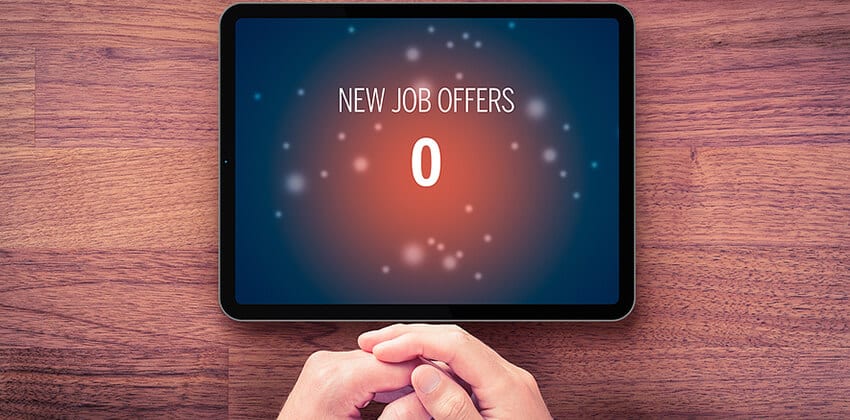
For decades, we have embraced the face-to-face interview, typically in person and sometimes by phone.
Since the Coronavirus pandemic, face-to-face interviews are often avoided or postponed as long as possible.
Video interviews have become MUCH more common, including one-way video interviews which were relatively rare.
One-way video interviews (or prerecorded interviews) are an increasing method of doing the first round of interviews, although phone interviews are still also widely used.
The purpose of the one-way video interview and the phone interview are typically the same: confirm that the candidate meets the basic requirements for the job.
This new style shakes up everything we hold dear about just what an interview is supposed to entail.
What Is a One-Way Video Interview?
In the land of job interviews, we have come to rely on and expect the 2-way or face-to-face interview where the employer asks the questions and the job seeker responds, hopefully turning the process into a conversation and connection.
Now we have something altogether new on the horizon which makes me think of a singer cutting a demo tape — it’s the one-way video interview.
In the one-way video interview, the job seeker’s answers to preset questions are recorded for the employer to see later.
Usually, this interview happens at the beginning of the interviewing process, often as a replacement or supplement to the phone interview which has typically served as the first step in screening job candidates.
The concept is simple: The employer can request a recorded video from a job seeker, and the job seeker answers pre-scripted interview questions usually by a specific date that is the deadline for the interview. Then, members of the employers staff can watch (and re-watch) the candidate’s answers to the questions at their convenience.
Prerecorded Video Job Interviews
So what can you do when faced with the 1-way interview? Prepare, and follow these twelve steps to success.
1. Read and follow the instructions very carefully.
You will be more successful in the interview and you will demonstrate your ability to work carefully and thoroughly by following the directions for the interview very carefully.
Skipping this step — or just quickly glancing at the instructions — can automatically disqualify you before the interview even begins. Avoid making assumptions about the process that could be wrong.
2. Meet the employer’s deadline.
The good news is that you can usually pick a time for the interview that is the best for you, after work or on weekends if you are employed. The employer usually sets a “due date” when the interview should be completed. Know that date, and meet that deadline to be considered.
If possible, beat that deadline by several hours or even days. Avoid doing the interview at the last possible moment to make the best impression on the employer.
3. Have the login information handy.
As part of the invitation, you should receive a URL where you will need to login to participate in the interview. Other login information, like the employer’s or the interviewer’s name, an identifier for the interview, and possibly a password, may be sent to you as part of the invitation process. Be sure to have that ready.
4. Make sure you have the right devices available.
If you have no other options, you can probably use your smartphone for this interview, assuming it has a camera. However, you will very likely make the best impression using a camera connected to a computer, assuming the computer also has a microphone and a speaker
Double-check with the interviewer if you need to use your smartphone.
When possible, test the connection to be sure it works before the interview regardless of device used.
In advance, test your microphone and camera to be sure that they work. Even perfect answers to the questions won’t make an impact if they can’t hear your answers or see you talk.
5. Do your homework.
Carefully review the job description and highlight where you meet or exceed the requirements.
In today’s digital world, you can learn all about the company, its competitors, its products, and its goals in short order by spending some time on the Internet. Review the employer’s website, press releases, products and services to know who they are and where they are going.
Then, be sure to focus on how you align with the job’s requirements as well as the employer’s goals and mission. [More: Interview Success Checklist and Pre-Interview Preparation.]
6. Have your interview answers ready.
If you receive the questions in advance, you have received a fabulous opportunity to be well-prepared. It’s like being handed the keys to the kingdom. Script out your answers in advance, remembering to tell clear and concise stories that are examples of your accomplishments.
If you don’t receive the questions in advance, which is unfortunately more likely, be prepared to answer the standard job interview questions. [More: Smart Answers to Interview Questions and Smart Strategies to Answer to Behavioral Interview Questions.]
Focus on the challenges you faced, the actions you took, and the results you attained. [More: Structured Examples.]
During the interview, have a copy of the job description and your resume or application available to reference if necessary.
7. Practice, practice, practice.
I could say this one hundred times — you must know your script well enough to be natural. When you answer the questions you need to sound like it is second nature to share this information. You won’t have that unless you memorize it, practice it aloud, and grow into it, just like an actor does with a script.
8. Choose your location carefully.
Choose a quiet spot where, hopefully, you will be the only person visible (and audible).
Don’t make the mistake of trying to do this interview in a busy place with many distractions around. Keep the interview background as simple as possible, like a wall, or something else that is unlikely to cause a problem or create a distraction.
If possible, have a light showing on your face from in front of you so that your face is well lit. Test the lighting to find the best position for it– a lamp which is slightly above your face and behind the camera, shining on you, is usually the most flattering.
9. Dress the part.
Just because you are not face-to-face does not make this any more casual. You want to be well-groomed and well-dressed, avoiding distractive prints, overly bright colors, and noisy jewelry. You want the focus to be on you, not on what you are wearing. [More: Dress for Job Interview Success.]
10. Be the best you.
The best you sits up straight and leans slightly forward, makes eye contact, remembers to smile and show personality, and talks in a clear, well-modulated voice. Don’t whisper, mumble, or fidget.
Practice will also help you overcome issues like fidgeting so again, there is more reason to prepare. If you can record yourself in practice, do it! You will rapidly see what needs to be fixed.
11. Look directly at the camera.
When you are answering a question, look directly at the camera rather than at your computer screen. Imagine that the personal who will be viewing this video is right there. Pretend you are talking to that person.
12. Pay attention to the clock.
Usually these interviews have a time-limit. So, put a clock where you can easily see it, and use the time wisely.
One Way Interview Benefit to the Employer
For employers, the benefit assumed is increased efficiency. They reduce the initial manpower hours for scheduling and conducting live interviews, even over the phone, and this can greatly cut down on the time spent reviewing candidates.
If an interviewee does not have a great start, the reviewer can just move on instead of what would have happened in a live interview — wasting the time to see it through, or giving the candidate false hope.
The other plus for the employer is that the reviewer or recruiter/human resource person is not identified, so he/she will also cut down on calls from job seekers checking in. Of course, this is not so good for you, the job seeker!
One Way Interview Benefit to the Job Seeker
For job seekers, the primary benefit is avoiding — or postponing — traveling to the employer’s location for the interview. This also helps them reduce exposure to the Coronavirus while making progress with their job search.
Some of the one-way platforms offer job candidates the opportunity to review their answers, before submitting their recording, and re-record any answers they think they could improve.
The disadvantages for the job seeker include losing the opportunity to ask questions which are answered immediately, limiting their ability to collect more information about the employer or the interviewer.
Each job seeker must also must succeed using relatively new technology in a high-stress circumstance, which may be a test of their knowledge of, and comfort with, that technology.
The Bottom Line on How to Prepare for One Way Interviews:
While the “how” of your job interview might change, the goal remains the same: Present the BEST you to the interviewer by focusing on knowing the job and the company and having clear answers and stories that demonstrate why you are the best fit for their position. You can do it!
Some of the Frequently Asked Interview Questions:
- Tell Me About a Time When You Failed
- Tell Me/Us About Yourself
- Why Do You Want THIS Job?
- How Did You Find This Job?
- Why Do You Want to Work Here?
- Why Do You Want to Leave Your Current Job?
- After a Layoff: Why Did You Leave Your Job?
- After Being Fired: Why Did You Leave Your Job?
- Do You Have Any Questions? — choose from 50+ good questions to ask them
- MORE Smart Answers to Interview Questions
More About Different Types of Job Interviews
- How to Ace Telephone / Phone Screen Interviews
- Top Tips for Lunch Interview Success
- Ace Your Video Interview
- 12 Keys to One-Way Video Interview Success
- 5 Tips for Acing Your Video Interview
- How to Handle Speed Interviews
- How to Handle Panel / Group Interviews
- How to Interview for a Temporary Job
- Questions to Ask in Informational Interviews

Laura DeCarlo is recognized as the career industry’s ‘career hero’ making a difference to both job seekers and career professionals as the founder of Career Directors International. She possesses 11 top-level certifications in resume writing, career coaching, and career management; 7 first place resume and job placement awards; and has written three books on interviewing and job search including Interview Pocket RX, Interviewing: The Gold Standard, Resumes for Dummies,and Job Search Bloopers. Follow Laura on Twitter at @careerhero.
More about this author…
Don't forget to share this article with friends!




